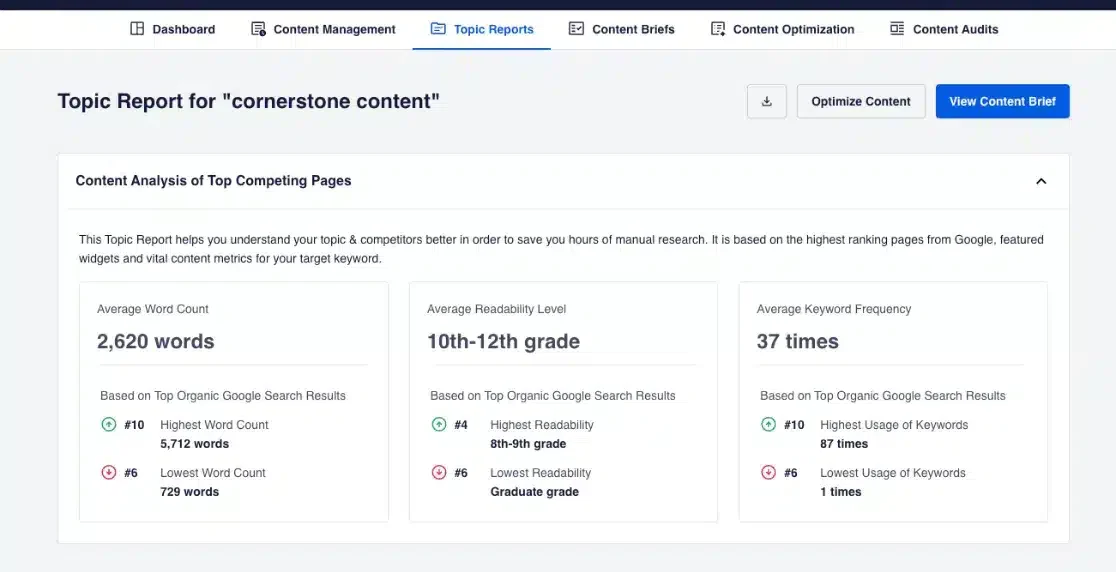Do you want to create content that your audience loves and that helps your business grow? You’re not alone! Many people struggle with this. The good news is that you can use data (real numbers and facts) to build an SEO content strategy that works.
Using real data helps you create content that brings more visitors to your website and helps your business grow. Plus, you get to give your audience more of what they like. It’s a complete win-win!
In this article, I’ll show you how to create an SEO content strategy using real data so you can stop guessing and start growing your audience.
What is an SEO Content Strategy?
An SEO content strategy is your plan for creating, publishing, and managing content that helps you reach your business goals. Think of it like a map that guides all your content creation, making sure everything you create has a purpose.
Why Use Data for Your Content Strategy?
If you want your content to bring in more visitors, leads, or customers, you need to be smart about what you publish.
Just creating content you think people might like isn’t enough anymore, especially in competitive industries. You need to use real data to avoid wasting time on content that doesn’t help your business grow.
Here are five ways a data-backed content strategy can help you:
- Better Return on Investment: Content takes time and money to create. When you use data to decide what content to make, you’re more likely to create content that works and brings in leads or sales.
- Know Your Audience Better: Data helps you understand who your audience is and what they want, so you can create content they’ll actually like.
- More Engagement: Using data to choose your topics means you’ll create content people want to read and engage with. This leads to better Google rankings and more shares on social media.
- Edge Over Competitors: While others might be guessing, you’ll be making smart decisions based on real information.
- Always Improving: Use data to measure how your content is doing and make it better over time.
8 Steps to Create an Effective SEO Content Strategy
Ready to create an SEO content strategy using data? Follow these 8 steps!
Step 1: Set Goals
Every business has different goals. Your SEO content strategy should help you reach those goals. Whether you want more sales, leads, donations, or signups, your content should support that.
Make sure your goals are SMART goals: Specific, Measurable, Achievable, Relevant, and Time-bound. For example, instead of “get more sales,” your goal could be “increase sales by 25% in the next 6 months.”
With clear goals, you know what you’re working toward. Everything else you do will help you reach these goals!
Step 2: Learn About Your Audience
You can’t create content your audience loves if you don’t know who they are! The best way to get to know them is through data.
Here are ways to learn about your audience:
Check Google Analytics
If your website has been around for a while, you already have some data about your visitors. Google Analytics can show you where they’re from, their age groups, what they’re interested in, and more.
Find this information in the User attributes » Overview report:
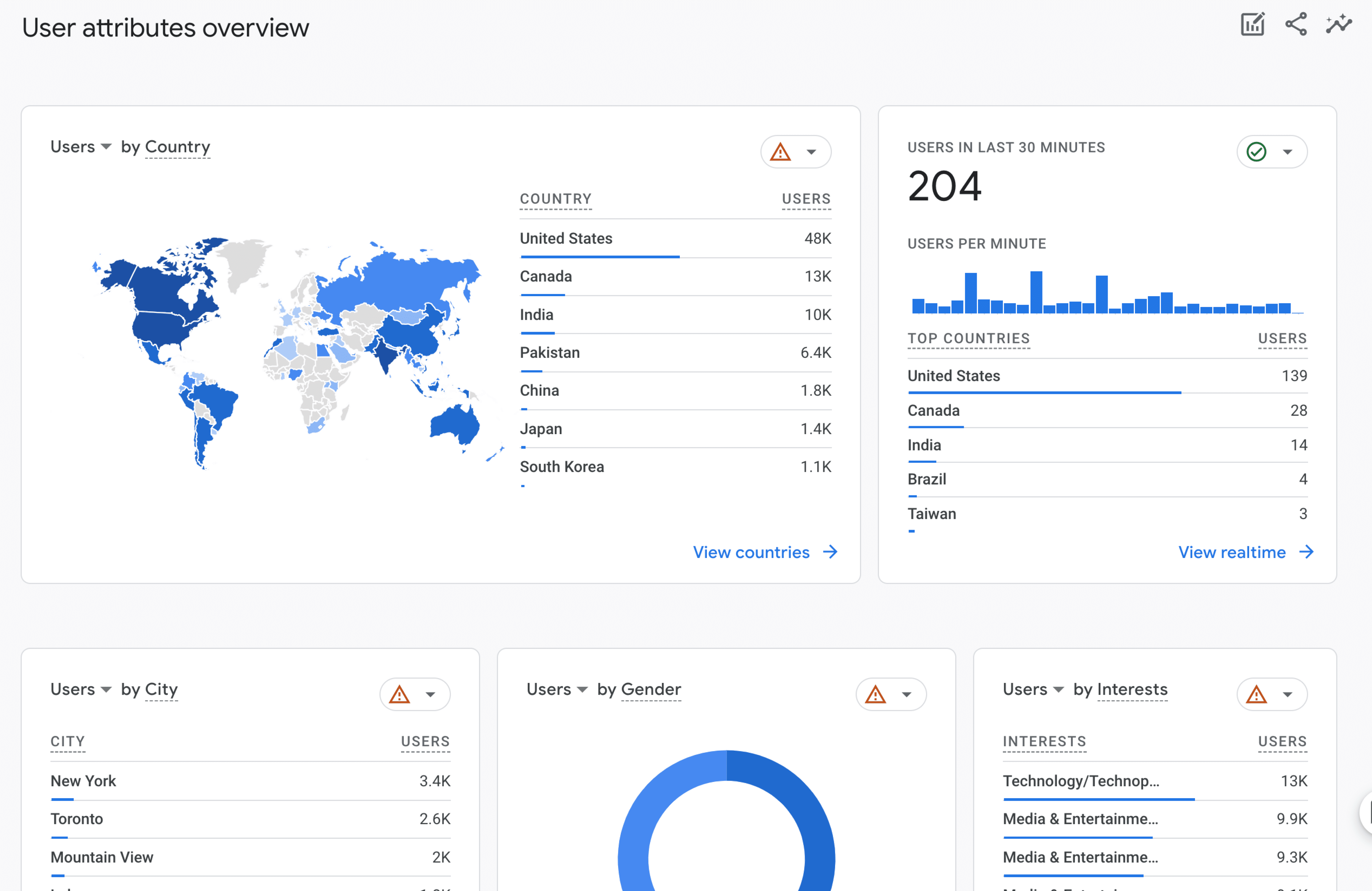
Using WordPress? If you have ExactMetrics, you can see some of this information right in your WordPress dashboard:
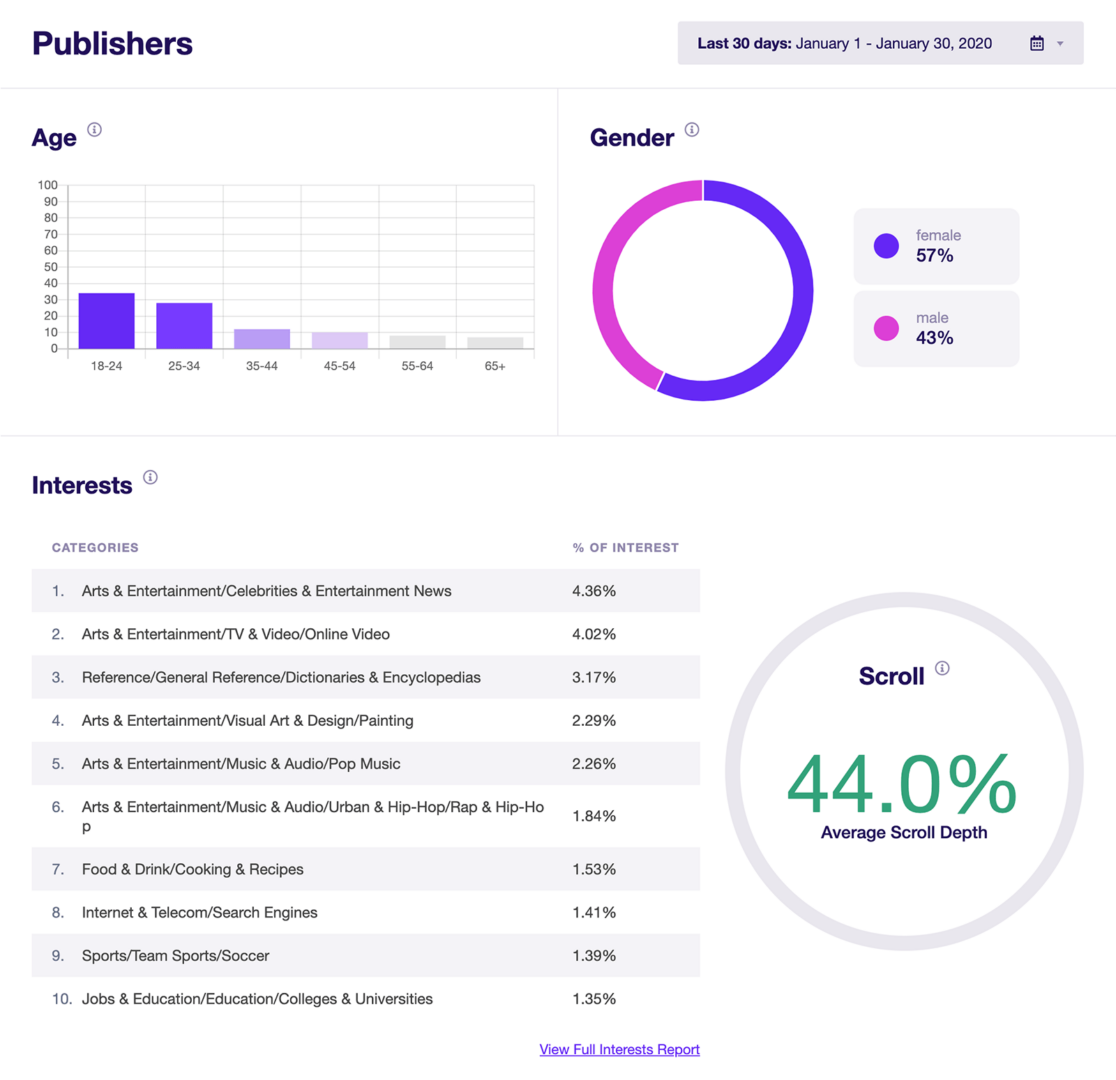
Look at social media data
Your social media accounts can tell you a lot about your audience. Platforms like Facebook and Instagram show you reports about who follows you:
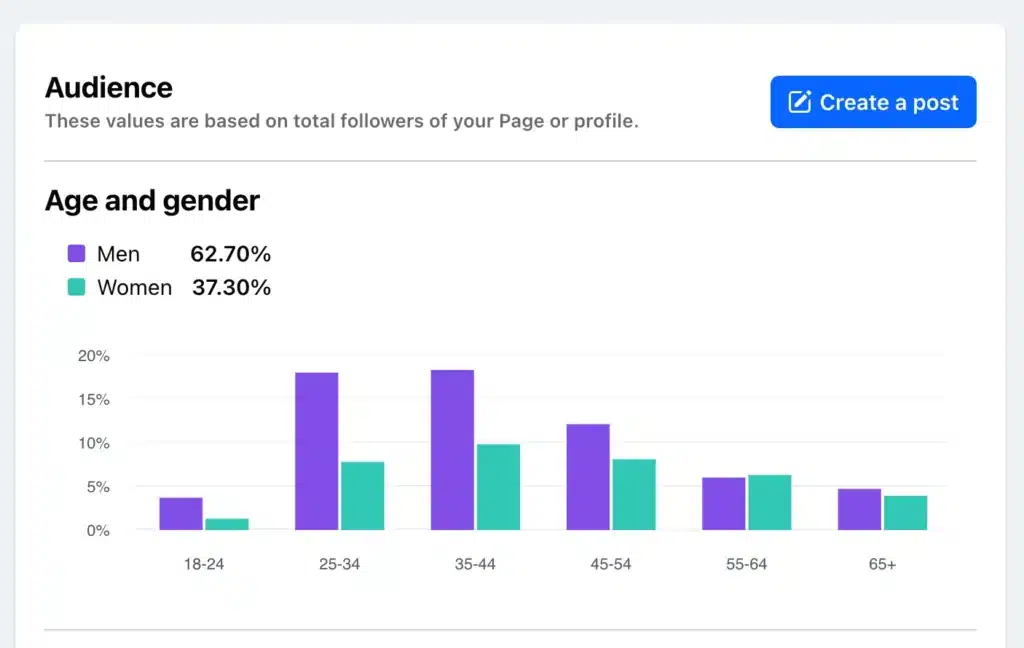
You can also see which of your posts get the most likes and clicks. Posts that your audience finds interesting will get more engagement.
Your social media reports show which posts get the most clicks, likes, and comments. You can also use Google Analytics or ExactMetrics to see how much traffic comes from social media:
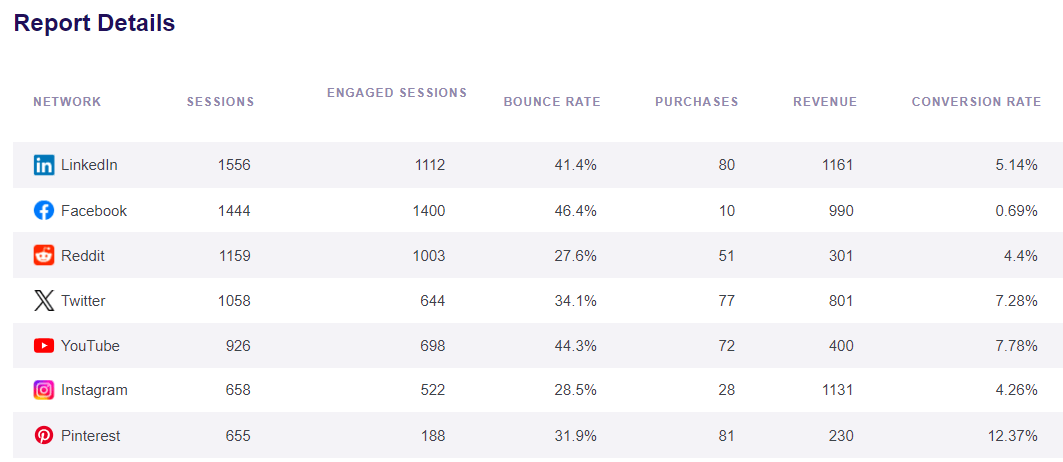
Create audience profiles
Many business owners skip this step, thinking they already know their ideal customer. But writing down the details of who your audience is can be really helpful, especially when you have data to back it up.
Using Google Analytics and other data, take time to think about who your ideal customer really is.
For help with this, check out UserFeedback’s guide on creating buyer personas.
Ask your audience directly.
Surveys and interviews are great ways to learn about your audience. You can ask exactly what you need to know to create the right content.
You can send surveys by email, post them on social media, or use a plugin like UserFeedback:
Every bit of information helps you understand your audience better!
Step 3: Review Your Current Content
Now that you know more about your audience, it’s time to look at the content you already have and see how well it matches what your audience wants.
This is called a content audit. It helps you see what’s working, what’s not, and where you need more content. It gives you valuable data for your strategy!
Here’s how to do it:
- Make a list of all your content: If that’s too much, start with your top 50-100 pages that get the most traffic.
- Record how each piece is performing: Look at how many people visit each page and how long they stay. For landing pages, also look at how many people take action (like signing up or buying).
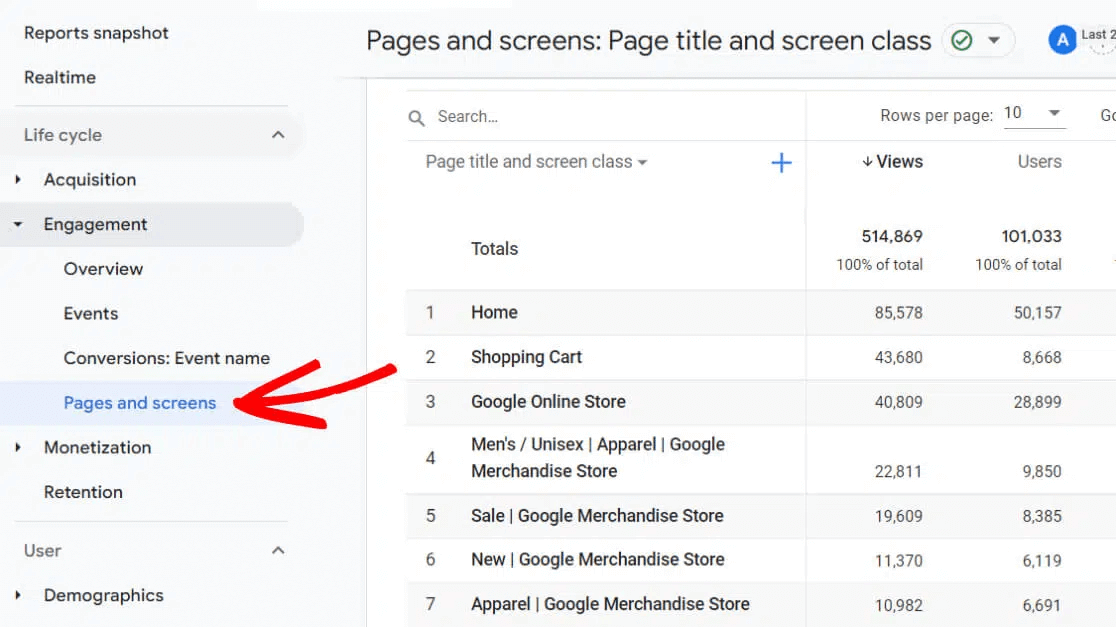
- Look for gaps where you need more content: After sorting by audience or topic, you should be able to see if you’re missing content in some areas.
- Sort your content by topic or target audience: This helps you analyze each category separately.
- Identify your best and worst content: What’s doing really well? What should be doing better?
This might seem like a lot of work, but it’s worth it! You’ll gain valuable insights that will help your whole SEO content strategy.
Step 4: Find Topics with Keyword Research
Now that you understand your audience and have reviewed your content, it’s time to find new topics that will interest your audience and help your SEO.

Keyword research adds more data to help you create a better strategy.
Here’s how to start:
- Begin with basic keywords related to your industry
- Use tools like Google Keyword Planner, Ahrefs, Semrush, or another keyword tool to find more keywords
- Look for specific (long-tail) keywords that have decent search volume and aren’t too competitive
- Think about what people are really looking for when they search these terms
- Group related keywords into topic clusters
Remember, it’s not just about finding popular keywords. You want topics that your audience cares about and that help your business goals.
Step 5: Check Out Your Competitors
So far, we have data about your audience, your current content, and keywords.
Now, let’s add competitor data! Seeing what your competitors are doing can give you great insights.
When looking at competitors, consider both direct and indirect competitors:
According to Bernard Huang from Clearscope, direct competitors offer the same services or products as you, while indirect competitors solve your audience’s problem in a completely different way.
You can also look at companies that publish similar content but aren’t direct competitors.
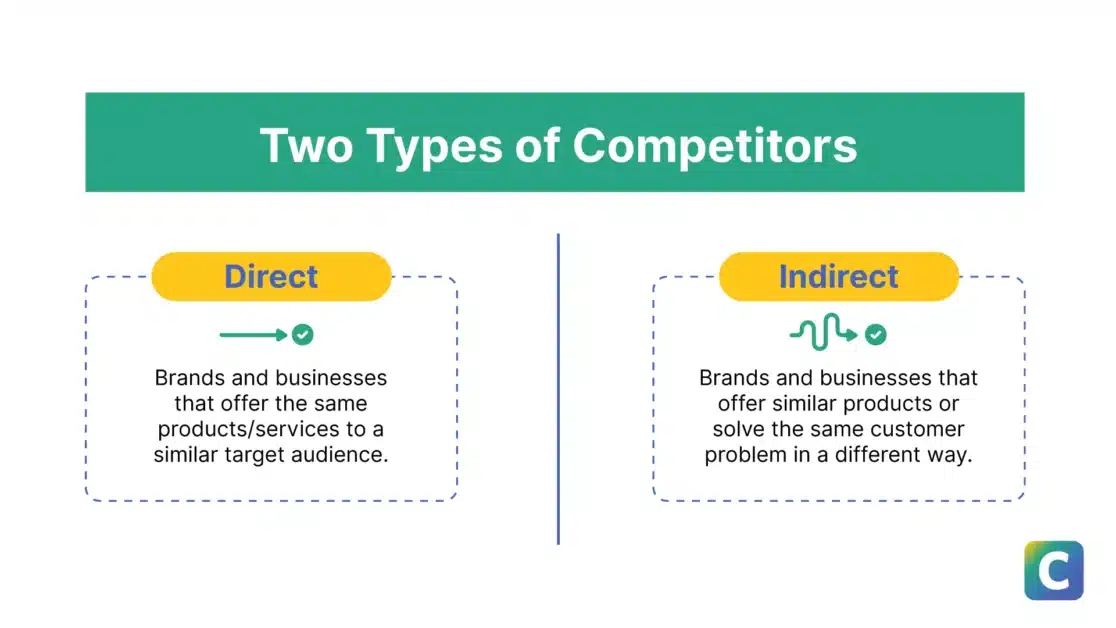
Look at your top 2-3 competitors and find out:
- What topics are they covering?
- What types of content work best for them?
- Where are the gaps in their content that you could fill?
- How do they structure their content?
- How do they reach different audiences?
Many SEO tools can help you research competitors, like Content Explorer in Ahrefs, Semrush, or BuzzSumo.
Or try SEOBoost, a tool that helps you research, optimize, and manage content using AI. It analyzes the top-ranking content for you:
Step 6: Write With Your Research in Mind
Now that you have lots of data, it’s time to use it to create content your audience wants, including the keywords they’re searching for, that’s better than what your competitors have.
Here are some tips for creating good content:
- Answer the questions people are really asking
- Make your content easy to read
- Include facts and data to support your points
- Use your audience research to speak directly to what readers need
- Optimize for SEO but write for humans first
- Include links to other pages on your website
For more SEO tips, check out All in One SEO’s guide: 8 SEO Mistakes Every Small Business Should Avoid.
Step 7: Share Your Content
Creating good content is important, but you also need to share it! Don’t just publish and hope people will find it. Have a plan to share your content:
- Post it on social media
- Send it in an email newsletter
- Consider paying to promote your best content
- Reach out to influencers or other websites that might link to your content
- Feature the post in a prominent place on your website
Share your content where your audience is spending the most time. That’s the most effective strategy!
Step 8: Measure Results & Keep Improving
The last step is to regularly check how your content is doing and make improvements. Keep an eye on things like:
- Page views
- How long people stay on your page
- How many pages they visit
- Conversion rates
- Social media reach
- Clicks from social media
If you use WordPress, check out ExactMetrics for tracking your content. The Top Landing Pages report has a lot of useful information:

ExactMetrics also makes it easy to track eCommerce, form submissions, and other things that Google Analytics doesn’t track automatically.
Get started with ExactMetrics today!
Also, remember to:
- Update your best content regularly
- Test different headlines or calls to action
- Stay up to date with trends in your industry
- Keep getting feedback from your audience
If you keep up with your content strategy, it will keep working for you!
FAQs
Below I’m answering some common questions about SEO content strategies that might also be at the top of your mind:
Is SEO part of a content strategy?
Absolutely! SEO is a crucial component of any effective content strategy. While content strategy encompasses your overall plan for creating and distributing valuable material, SEO ensures that content gets discovered by your target audience.
Think of content as the treasure and SEO as the map that leads people to it. They work hand-in-hand to drive meaningful results.
What are SEO content strategies?
SEO content strategies are targeted approaches that blend search optimization principles with content creation.
They involve researching keywords your audience uses, analyzing search intent, creating valuable content that addresses those needs, and structuring it for maximum visibility.
Essentially, it’s about creating content people want to consume while ensuring search engines can understand and recommend it. 📊
How do I know if my SEO content strategy is working?
Track metrics that matter! Look for increasing organic traffic, higher rankings for target keywords, improved engagement metrics (time on page, pages per session), and growing conversion rates. Also monitor backlinks, social shares, and comments.
The key is watching trends over time—sustainable growth across these indicators signals your strategy is on the right track. 📈
How often should I update my content strategy?
Refresh your content strategy quarterly for tactical adjustments and annually for major strategic reviews. However, stay flexible! Industry changes, algorithm updates, or significant shifts in audience behavior warrant immediate revisions.
Remember, the digital landscape evolves rapidly—your strategy should too. Regular data analysis will tell you when it’s time for updates.
That wraps it up!
I hope you liked this article and found it helpful for creating an SEO content strategy. For more about content marketing and SEO, check out:
- 6 Best Search Console Insights Reports to Track
- Mastering SEO Search Intent: A Guide to Higher Rankings
- Ultimate Guide to Search Engine Visibility
- Cornerstone Content for SEO: What It Is & How to Create It
Not using ExactMerics yet? What are you waiting for?
Don’t forget to follow us on X and Facebook to see all the latest reviews and Google Analytics tips and tutorials.



